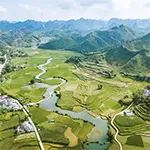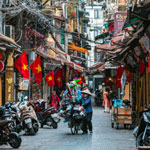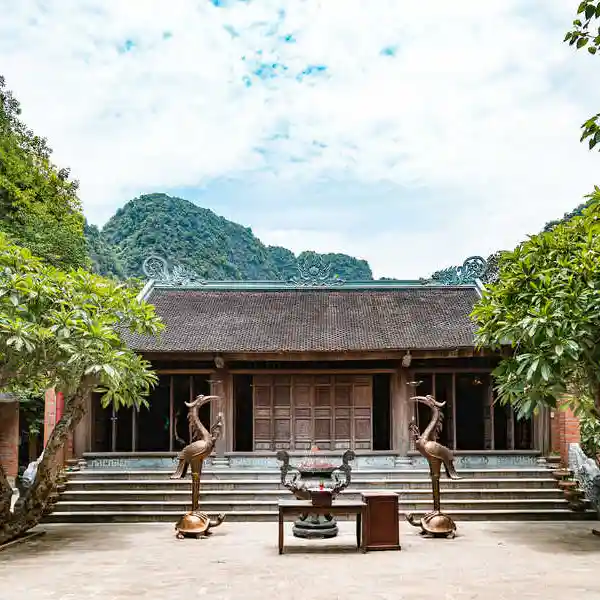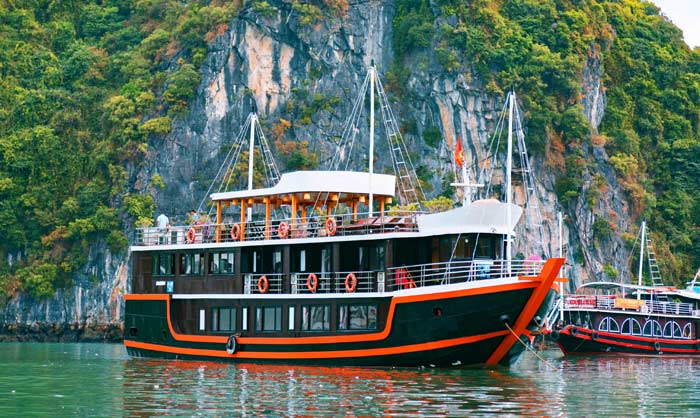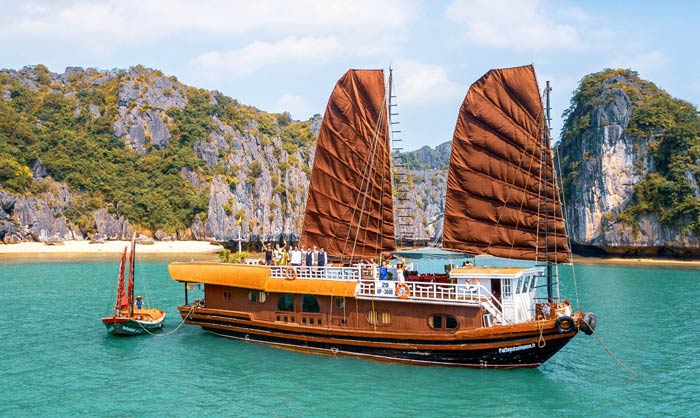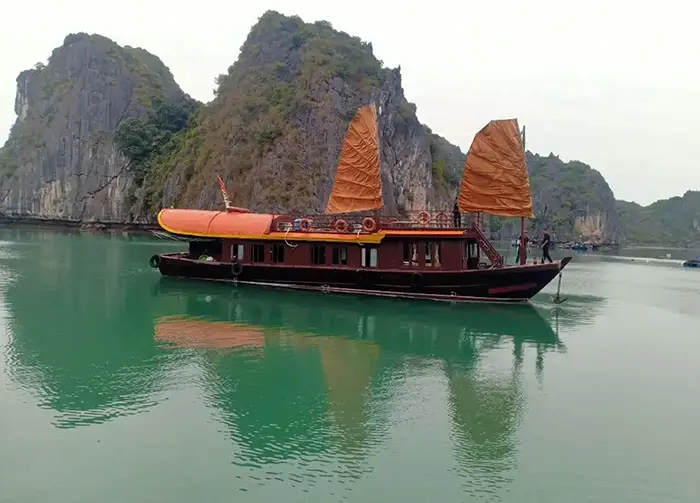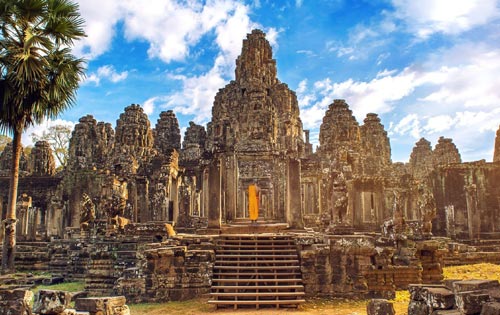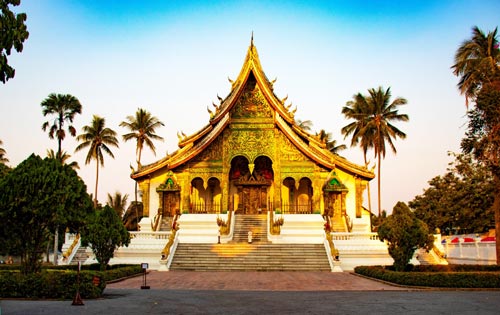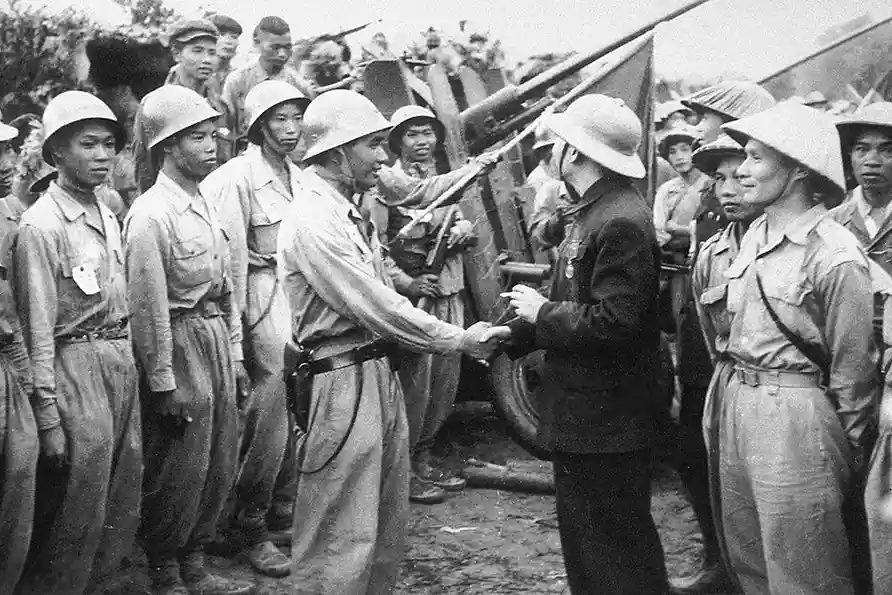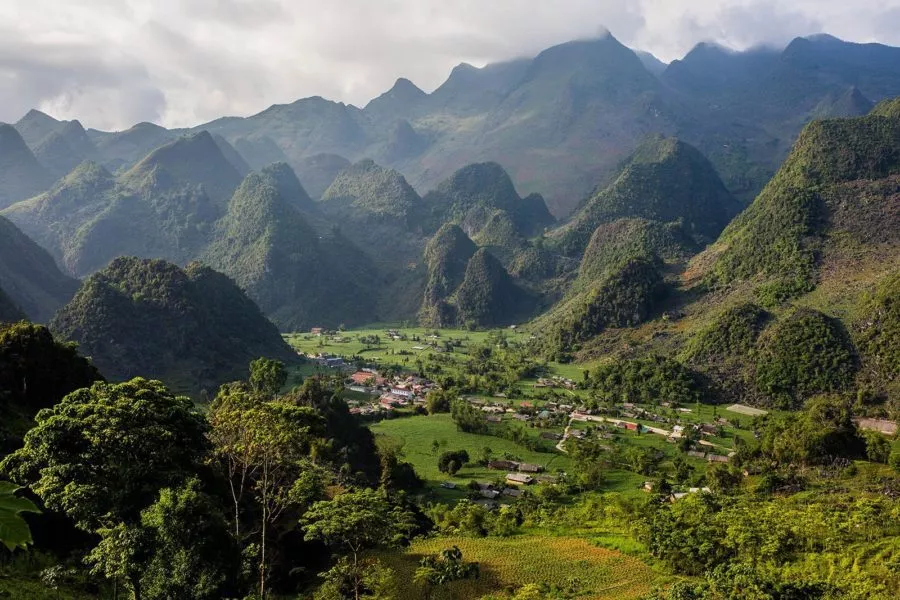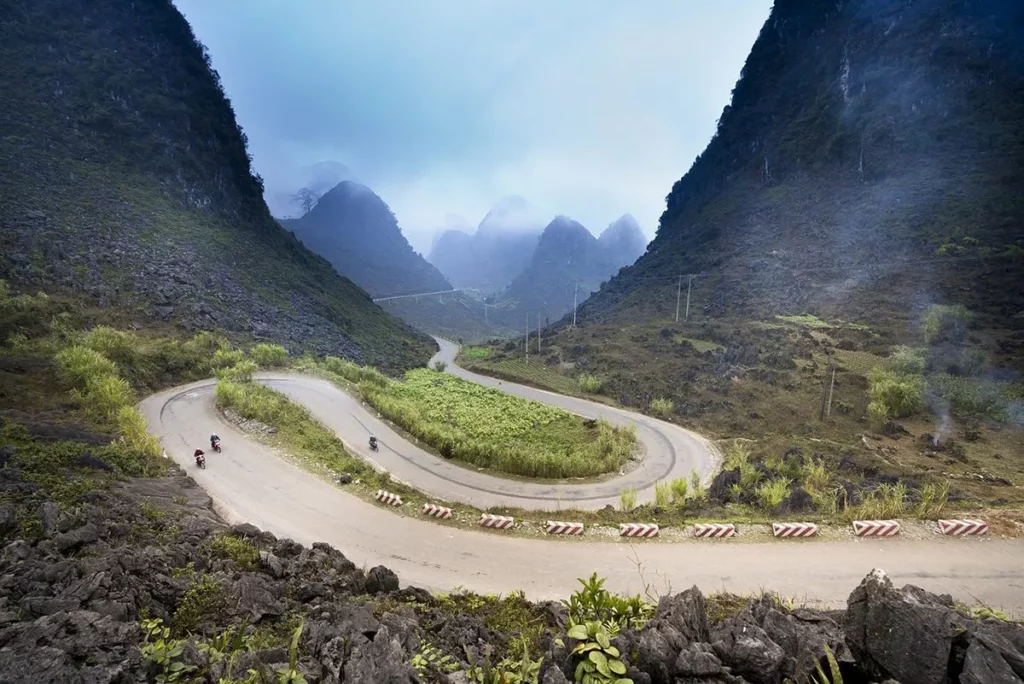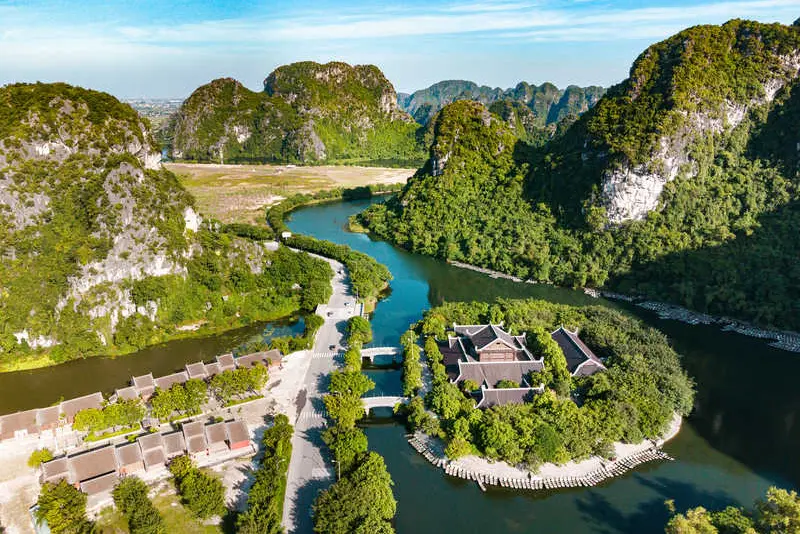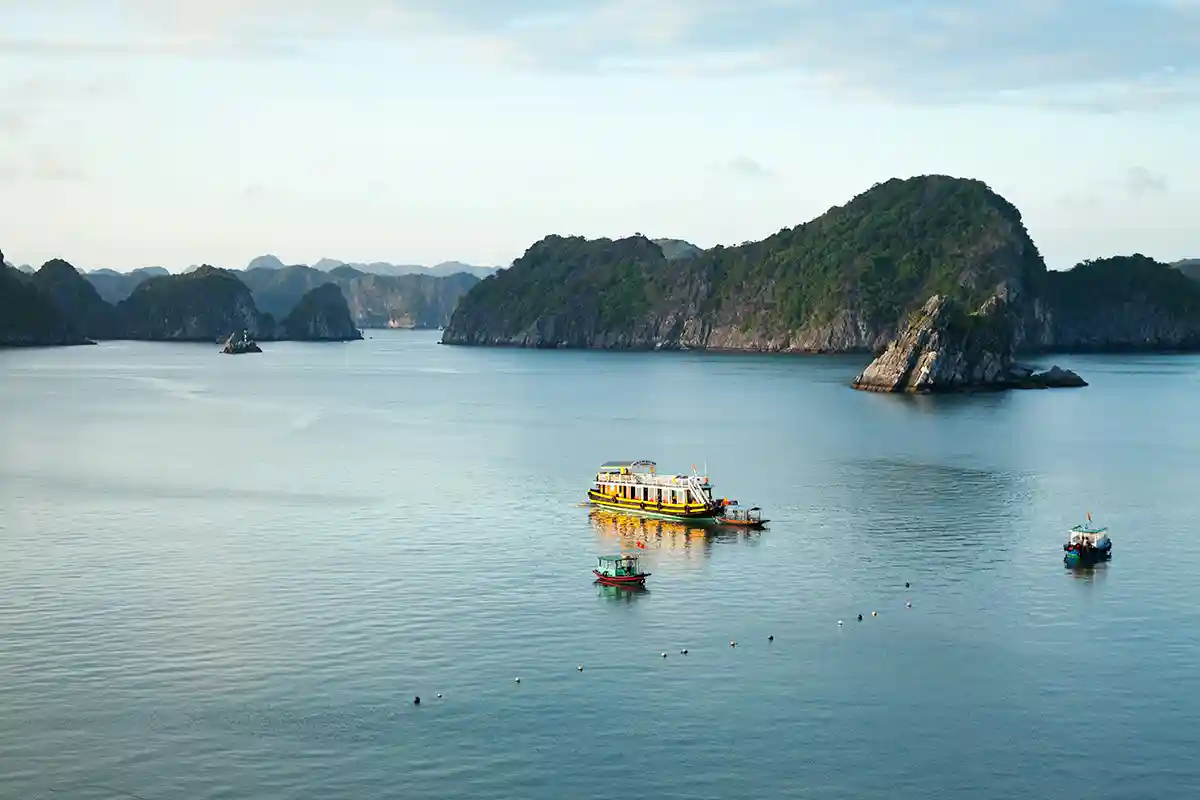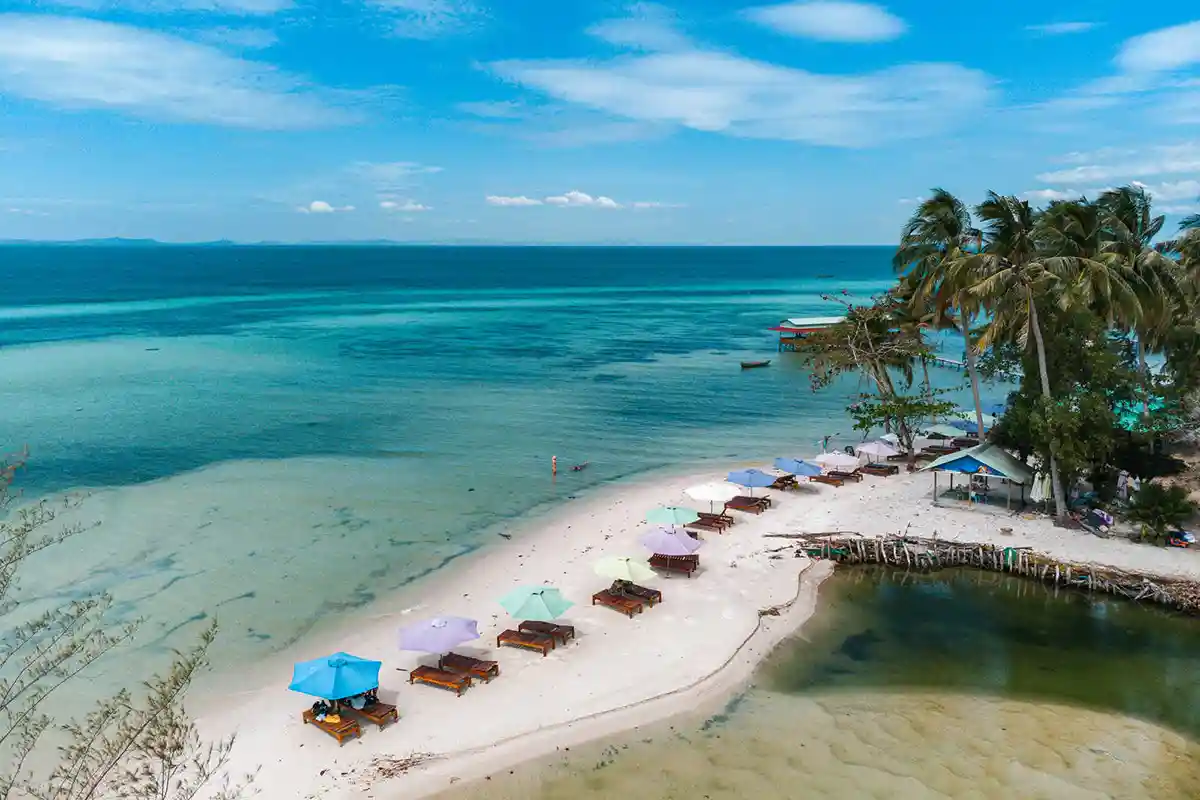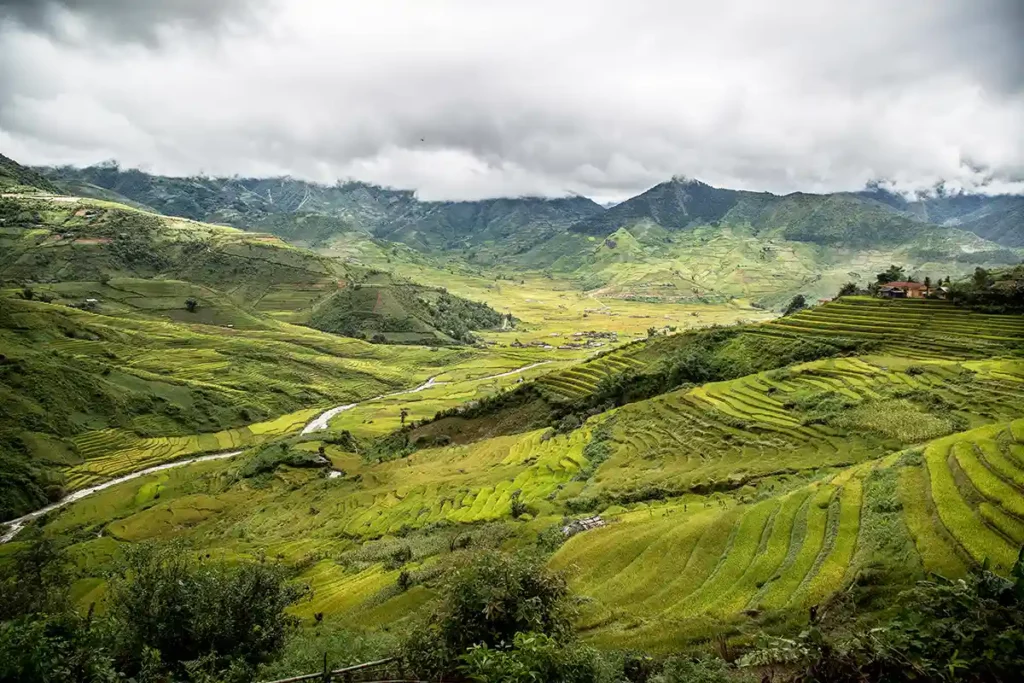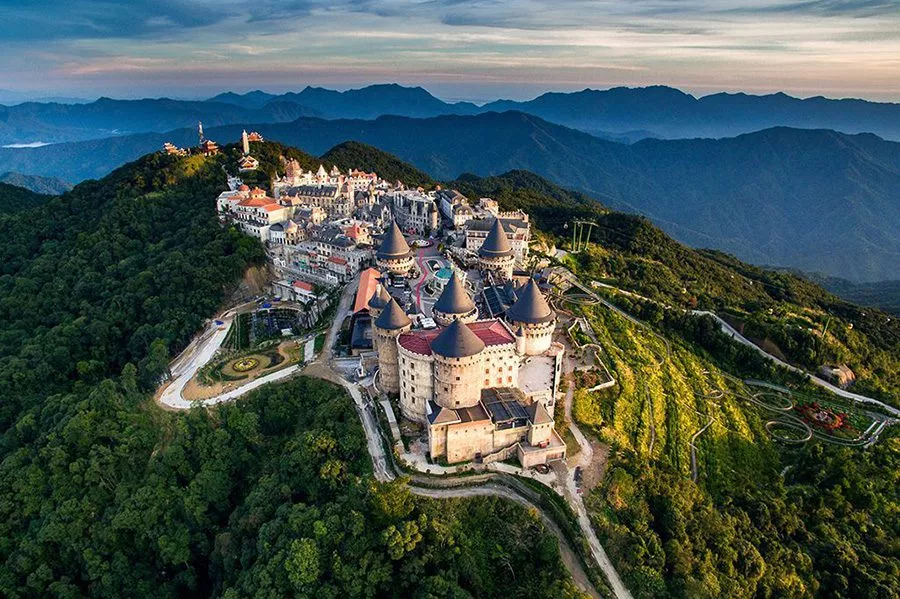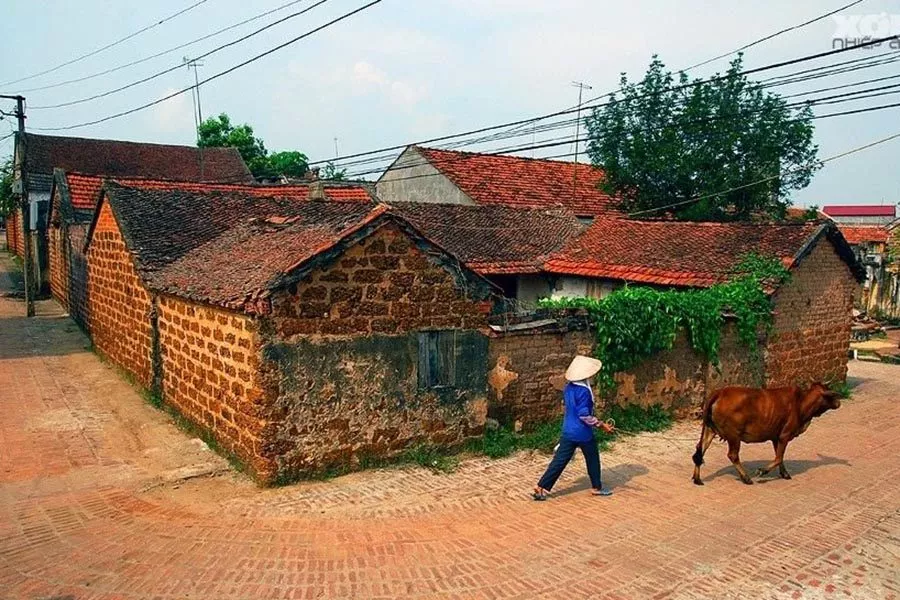In 2024, Vietnam celebrated the 70th anniversary of the historic victory of the Viet Minh troops over French forces at the Battle of Dien Bien Phu. It’s a remarkable occasion to revisit this major turning point — one that shaped not only Vietnam’s future but also international relations.
Let’s take a closer look at the many dimensions of this defining event.
Feel free to contact us to organize your tour in Vietnam.
A brief history of France’s presence in Indochina
Expansion and economic interests
France’s presence in Indochina, which began officially in the 1850s, was initially driven by ambitions of expansion and the search for new markets and resources. Indochina, rich in raw materials such as rubber, tea, rice, and minerals, represented an economic opportunity for a rapidly industrializing France. Colonizing the region not only granted access to these valuable resources but also opened new markets for French manufactured goods.
Political and military strategy
Strategically, France sought to expand its influence in Southeast Asia to counterbalance Britain’s presence in the region and secure its maritime routes to China. Establishing military bases in Indochina was seen as essential to maintaining a strategic foothold in this part of the world, particularly around key points such as the Strait of Malacca.
The “civilizing mission”
Colonization was also justified by what France called its mission civilisatrice — a blend of idealism and ethnocentrism. It assumed that France had a duty to bring civilization, in the form of education, religion (mainly Catholicism), and culture, to peoples considered “less advanced”. While this paternalistic attitude often masked economic exploitation and political domination, it also led to significant investments in infrastructure, education, and healthcare across Indochina.
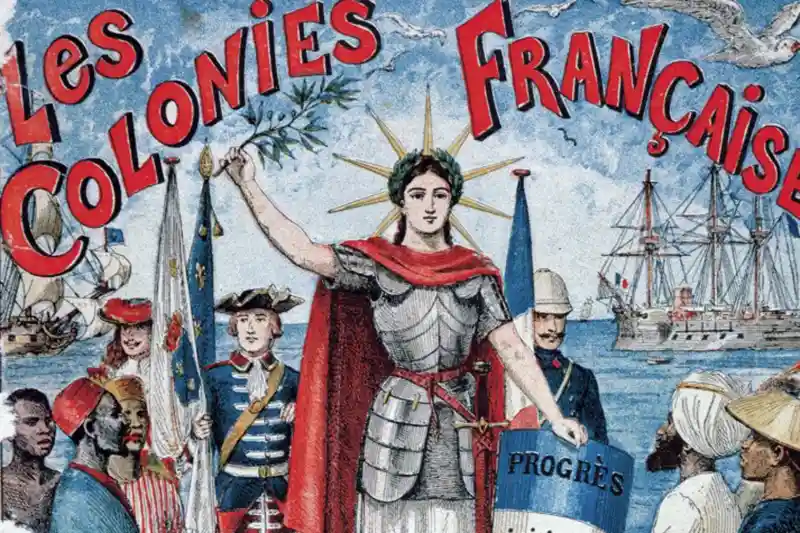
Bringing “French civilization” to the colonies. Propaganda poster.
Cultural influence
France’s cultural imprint in Indochina is undeniable, shaping the region’s architecture, education, and culture. Cities such as Hanoi and Saigon (today Ho Chi Minh City) were profoundly influenced by French colonial architecture, while legal and educational systems also reflect this heritage.
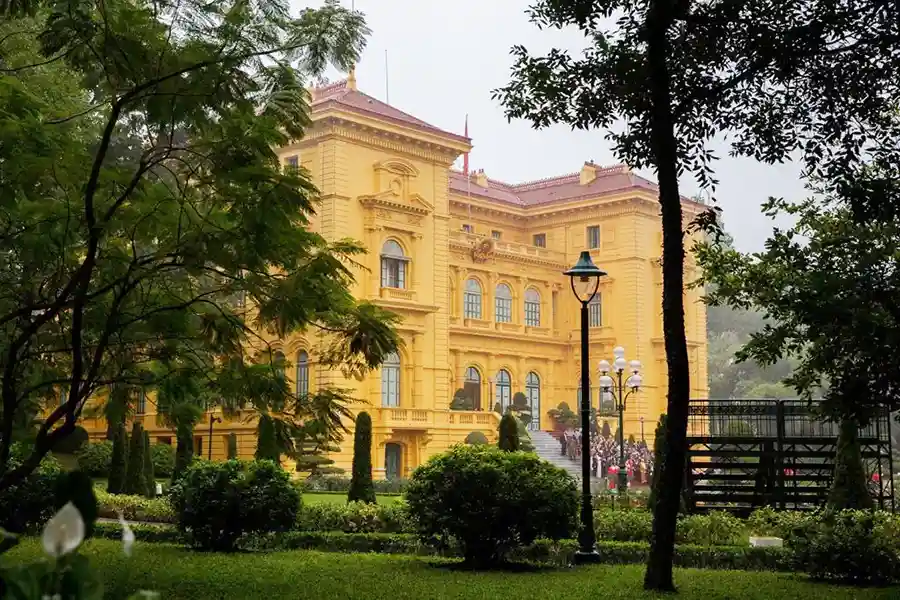
View of the Presidential Palace from its gardens, Hanoi, Vietnam.
Resistance and conflict
However, France’s presence in Indochina was met with resistance from the very beginning. Various ethnic and political groups opposed French control and exploitation. These tensions eventually gave rise to nationalist and independence movements — among them the Viet Minh, led by Ho Chi Minh — which would fight for Vietnam’s freedom.
The French presence in Indochina was thus a complex mix of economic ambition, political strategy, cultural ideology, and local resistance. This historical backdrop is key to understanding the deep roots of the conflict that led to the Battle of Dien Bien Phu — a decisive turning point in relations between France and Indochina.
The historical context of the 1950s for Vietnam and France
Vietnam: Between aspirations for independence and international tensions
In the 1950s, Vietnam, under the banner of the Viet Minh led by Ho Chi Minh, was engaged in a fierce struggle for independence. After World War II, nationalist sentiment had been galvanized against colonial domination, and the political vacuum left by Japan — which had occupied Vietnam during the war — provided a unique opportunity for the Viet Minh to assert themselves (see our article on the 1945 Declaration of Independence). The end of the war saw the return of French forces eager to regain control of Indochina, which led to the First Indochina War (1946–1954).
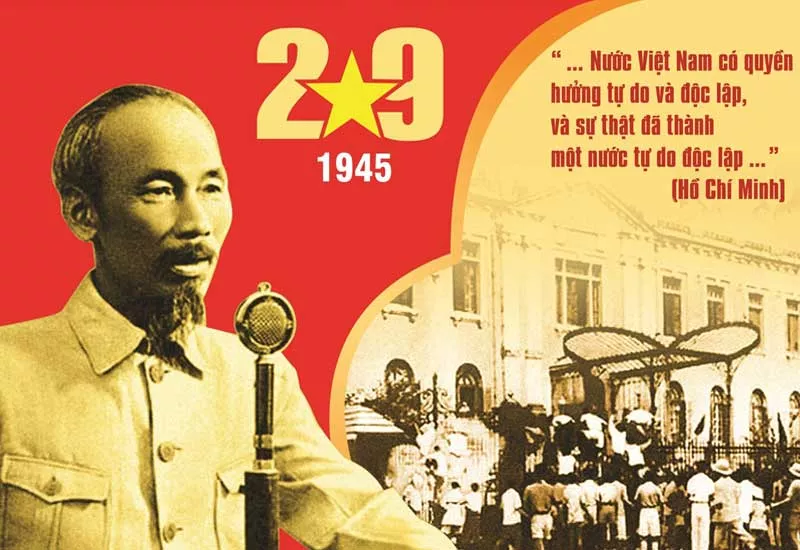
Declaration of Independence of Vietnam, September 2, 1945.
This period was also marked by the Cold War, during which Soviet and Chinese support for the Viet Minh added an international dimension to the conflict, situating it within the broader global struggle between the communist and Western blocs.
France: Postwar reconstruction and colonial decline
For France, the 1950s were a time of rebuilding after the devastation of World War II. The Indochina War occurred at a moment when the country was struggling to restore its power and national identity. The determination to keep Indochina under French rule partly reflected a desire to reclaim national prestige after the humiliation of German occupation.
However, the war in Indochina grew increasingly unpopular in France, where public opinion was divided and the human and financial costs of the conflict were mounting. The war took place amid a global wave of decolonization, as territories in Africa, Asia, and the Middle East fought for independence.
The impact of the Cold War
The Cold War deeply influenced the events in Indochina. The United States, eager to contain the spread of communism in Asia, provided financial and military support to France, albeit with some hesitation about direct involvement. The conflict in Indochina was seen as another front in the broader fight against communism, reflecting the global tensions of the time.
Toward Dien Bien Phu
The context of the 1950s thus set the stage for the Battle of Dien Bien Phu. On one side stood Vietnam, supported by communist allies and driven by a powerful desire for independence. On the other was France, weakened by the war but determined to maintain its colonial empire, backed by Western powers concerned about the spread of communism. This confrontation at Dien Bien Phu would become the climax of a prolonged struggle, with stakes that extended far beyond Vietnam’s borders and were shaped by the global dynamics of the time.
This complex context of the 1950s shaped the course of the First Indochina War and prepared the ground for the historic confrontation at Dien Bien Phu — a battle that would redefine relations between Vietnam and France and influence the broader process of decolonization around the world.
Why a battle took place at Dien Bien Phu — and what was at stake?
Strategic choice of Dien Bien Phu
Dien Bien Phu was chosen for its strategic location. Nestled in northwestern Vietnam near the Laotian border, the valley was surrounded by high mountains — which the French believed would make it difficult for the Viet Minh to transport heavy artillery or reinforcements. By occupying Dien Bien Phu, France hoped to cut the Viet Minh’s supply lines between Laos and Vietnam, weaken their guerrilla capacity, and force them into a conventional battle where France’s technological and air superiority could prove decisive.
Military and political objectives
The goals at Dien Bien Phu were both military and political. Militarily, France sought a decisive victory to crush the Viet Minh’s morale and combat strength. Politically, such a triumph was expected to strengthen France’s position in the ongoing Geneva negotiations about Indochina’s future — demonstrating that France remained a dominant force in the region.
Stakes for the Viet Minh
For the Viet Minh, Dien Bien Phu represented an opportunity to demonstrate their strength and tactical ingenuity. A victory over the well-equipped and entrenched French forces would grant them immense legitimacy, both nationally and internationally. It would strengthen their position as the legitimate representative of the Vietnamese people in the struggle for independence and in future political negotiations. The battle was also a test of their ability to conduct large-scale military operations against a Western adversary.
Miscalculation and innovation
France gravely underestimated the Viet Minh’s ability to overcome logistical challenges and mobilize a force capable of transporting heavy artillery through mountainous terrain. Under General Vo Nguyen Giap, the Viet Minh displayed remarkable ingenuity — building an extensive trench network around French positions and combining guerrilla tactics with conventional assaults.
Global implications
The battle had implications that went far beyond the local context. It took place in the midst of the Cold War, where a communist victory in Vietnam could influence the balance of power in Southeast Asia and beyond. For Western powers, Dien Bien Phu was a test of the Western bloc’s ability to contain the spread of communism. For the global decolonization movement, a Viet Minh victory would serve as both an inspiration and a model.
Ultimately, this confrontation revealed the limits of conventional military power when faced with a motivated and well-organized guerrilla force, reshaping modern military strategies.
The course of the battle, the reasons for the French defeat, and the strengths of Viet Minh
Prelude to the Battle
The Battle of Dien Bien Phu began in November 1953, when French forces parachuted troops into the Dien Bien Phu valley with the aim of establishing a fortified base to lure the Viet Minh into a conventional battle. The French hoped to cut the Viet Minh’s supply lines and force them into a direct confrontation, where France’s technological and air superiority could be fully exploited.
The Viet Minh’s siege and strategy
General Vo Nguyen Giap, commander of the Viet Minh forces, chose a strategy of siege, gradually encircling the French base with heavy artillery that his troops managed to transport and install in the surrounding mountains despite major logistical challenges. This artillery allowed the Viet Minh to bombard the French positions, rendering the airstrips unusable and effectively cutting off the French forces from reinforcements and aerial resupply.
Phases of the battle
The battle unfolded in several phases, from March to May 1954. The Viet Minh’s initial artillery bombardments were followed by infantry assaults on the outlying French strongpoints surrounding the main base. Each French position that fell enabled the Viet Minh to tighten their grip and increase the pressure on the center of the fortress. Living and fighting conditions for the French troops, isolated and under constant bombardment, became extremely difficult.
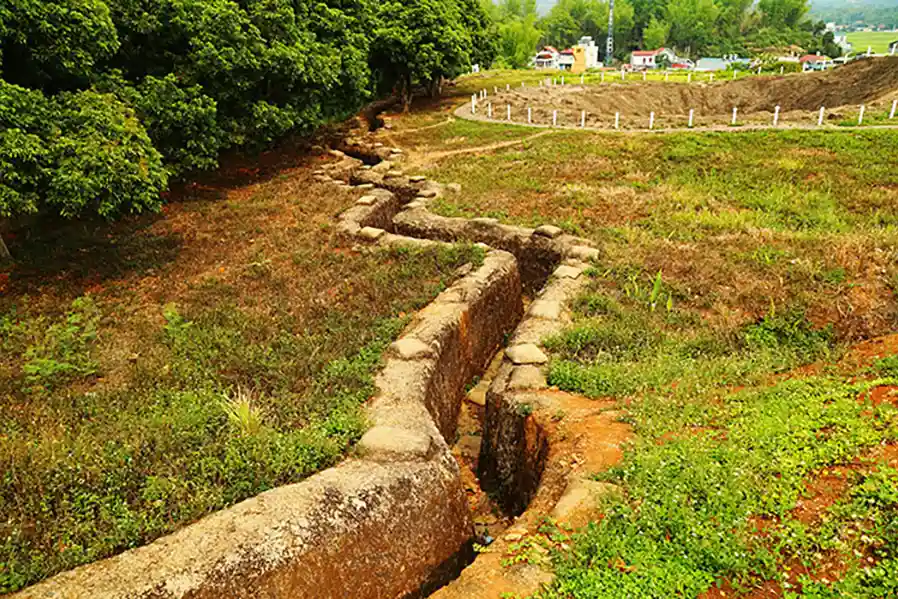
Battle site at Dien Bien Phu
Reasons for the French defeat
The French defeat at Dien Bien Phu can be attributed to several key factors:
- Underestimation of the enemy: The French underestimated the Viet Minh’s ability to transport heavy artillery into the mountains and sustain a prolonged siege.
- Logistical difficulties: The isolation of the base, due to the destruction of the airstrips and the Viet Minh’s control of access routes, prevented resupply and reinforcement of the French troops.
- Morale and exhaustion: The long siege and harsh conditions eroded the morale of the French soldiers, whereas the Viet Minh remained highly motivated and effectively supported despite the difficult terrain.
- Strategy and tactics: The French reliance on a conventional battle strategy proved ineffective against the Viet Minh’s guerrilla tactics and methodical siege operations.
Strengths of Viet Minh
The Viet Minh forces, under Giap’s command, demonstrated remarkable adaptability and ingenuity. They not only overcame immense logistical obstacles to besiege the base but also employed innovative tactics, such as constructing an extensive network of trenches to protect against aerial and artillery attacks while advancing toward French positions. The determination and motivation of the Viet Minh fighters—driven by the conviction that they were fighting for their nation’s independence—were crucial to their success.
Viet Minh’s victory marked a turning point in the First Indochina War, revealing the limits of conventional military operations in guerrilla warfare and leaving a profound impact on global military strategy.
The consequences of the Viet Minh victory
For the Viet Minh and Vietnam
The victory at Dien Bien Phu had a profound and immediate impact on the Viet Minh and the future of Vietnam:
- Political and military affirmation: The victory solidified the Viet Minh’s position as the dominant political and military force in Vietnam, capable of defeating a European colonial power. It strengthened the movement’s legitimacy and popular support within the country.
- Acceleration of independence: The triumph accelerated the process of Vietnam’s independence, leading to the 1954 Geneva Accords, which recognized the independence of Vietnam, Laos, and Cambodia, while dividing Vietnam into North and South along the 17th parallel.
- Regional influence: The victory had a ripple effect throughout the region, inspiring other independence and anti-colonial movements across Southeast Asia and beyond, by proving that a colonial power could be defeated through guerrilla warfare.
For France
The defeat at Dien Bien Phu marked a turning point for France, with long-term consequences for its colonial and international policies:
- End of French presence in Indochina: The battle effectively ended French presence in Indochina, marking the close of an era and the beginning of France’s withdrawal from its colonies in Southeast Asia..
- Reassessment of colonial policy: This defeat forced France to reconsider its colonial ambitions, accelerating the decolonization process that soon followed in other regions, particularly in North Africa.
- Impact on domestic politics: The defeat, along with the human and financial cost of the Indochina War, fueled public discontent and political unrest in France, leading to significant political changes and a reassessment of the country’s foreign and defense policies
International context and the Cold War
The Viet Minh victory also had major implications for the international context, especially during the Cold War:
- East–West dynamics: The success of the Viet Minh, supported by China and the Soviet Union, was perceived as a gain for the communist bloc, intensifying the global competition between the two superpowers during the Cold War.
- A model for liberation struggles: Dien Bien Phu became a model for other national liberation movements and guerrilla wars around the world, demonstrating the effectiveness of guerrilla tactics against better-equipped conventional forces.
- Implications for the United States: The French defeat and subsequent withdrawal paved the way for deeper American involvement in Vietnam, eventually leading to the Vietnam War in the 1960s and 1970s, with its own far-reaching historical and global consequences.
70 Years Later: The legacy of the battle of Dien Bien Phu
Memory and Interpretation
Seventy years later, the Battle of Dien Bien Phu holds a unique place in collective memory — in Vietnam, in France, and around the world. For Vietnam, Dien Bien Phu is celebrated as a defining moment of national pride and victory over colonialism — a testament to the resilience and determination of the Vietnamese people in their struggle for independence and reunification. In France, the battle is remembered with a certain ambivalence, as a time for reflection on past mistakes, the painful end of a colonial empire, and the beginning of a new era of decolonization.
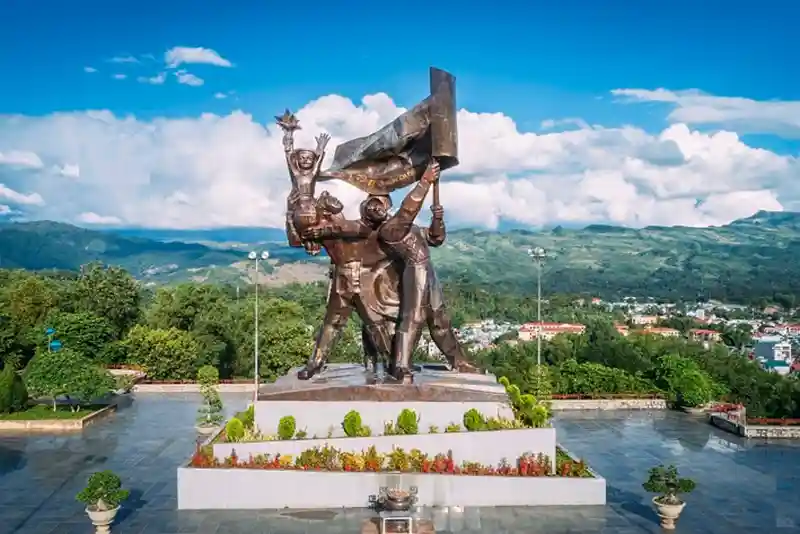
Commemorative monument at Dien Bien Phu
Military impact
On a military level, Dien Bien Phu helped redefine the understanding of wars of liberation and asymmetric conflicts. The Viet Minh victory demonstrated the effectiveness of guerrilla tactics against a better-equipped conventional force, influencing combat strategies in later conflicts around the world.
Lessons from history
Dien Bien Phu remains an important case study for historians, military strategists, and policymakers. It illustrates the limits of military power, the importance of knowing the terrain and the enemy, and the crucial role of political will and popular support in determining the outcome of conflicts.
Diplomacy and international relations
The battle also left a lasting mark on diplomacy and international relations, particularly in the context of decolonization and the Cold War. It helped shape a new era in which independence movements could aspire to defeat colonial powers, thus redefining the global geopolitical landscape.
Education and culture
In education and culture, Dien Bien Phu continues to be studied and commemorated through films, books, documentaries, and academic programs dedicated to this crucial period in history. These works help pass on the lessons of Dien Bien Phu to new generations, emphasizing the importance of peace, intercultural understanding, and conflict resolution.
Works to explore
To deepen the understanding of the Battle of Dien Bien Phu and its impact, several cultural works — including books, films, and documentaries — offer rich and diverse perspectives on this historic event. Below are some recommended references:
Books
Dien Bien Phu (2004) by Pierre Pellissier: This book offers a detailed exploration of the military strategies, harsh conditions, and political consequences of the battle. Drawing on primary sources and eyewitness accounts, it provides an in-depth analysis of both the strategic and tactical errors as well as the courage and resilience of the soldiers involved.
Hell in a Very Small Place: The Siege of Dien Bien Phu by Bernard B. Fall: Widely regarded as one of the definitive accounts of the battle, Bernard B. Fall — a Franco-American historian — delivers a detailed and gripping analysis of the siege, based on exhaustive documentation and firsthand testimonies from participants.
The Last Valley: Dien Bien Phu and the French Defeat in Vietnam by Martin Windrow: Windrow presents a comprehensive study of the battle, examining not only its military aspects but also the political and human dimensions of the conflict.
Films
The 317th Platoon (1965) directed by Pierre Schoendoerffer: Based on the director’s own experiences in Indochina, this film captures the intensity and brutality of the conflict. Although it does not specifically depict Dien Bien Phu, it offers insight into the broader context of the Indochina War.
Dien Bien Phu (1992) directed by Pierre Schoendoerffer: Returning to Vietnam, Schoendoerffer reconstructs the events of the battle, using his expertise to create a dramatic and realistic portrayal of the siege.
Documentaries
The Battle of Dien Bien Phu (available on YouTube): Several documentaries have been produced on the subject, offering analyses based on archival footage, veteran interviews, and insights from historians. These works help illuminate the many dimensions of the conflict — from both the French and Vietnamese perspectives.
Each of these works contributes in its own way to shedding light on the complexities of the Battle of Dien Bien Phu, offering perspectives on military strategy, human experience, and the political consequences of the conflict. For anyone seeking to fully understand this landmark event in modern history, exploring these books and films is highly recommended.

